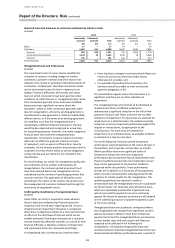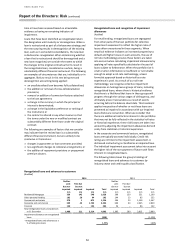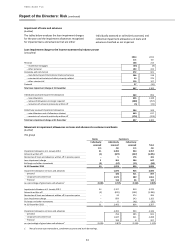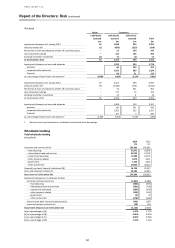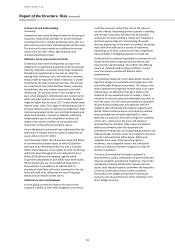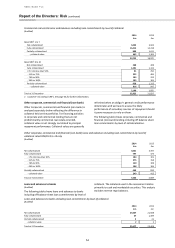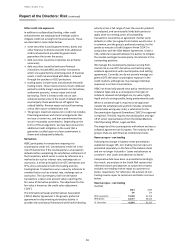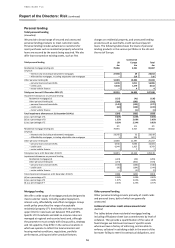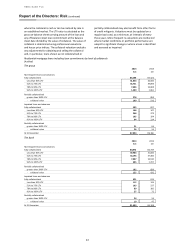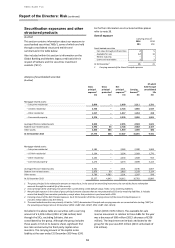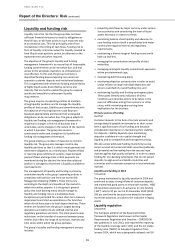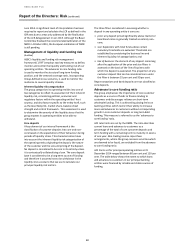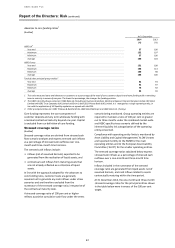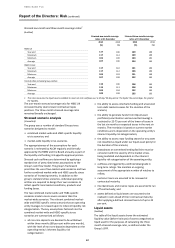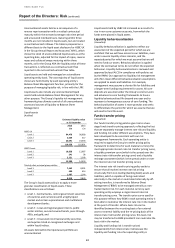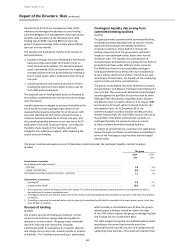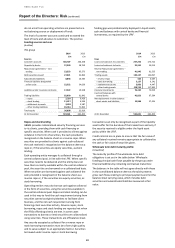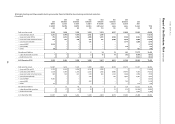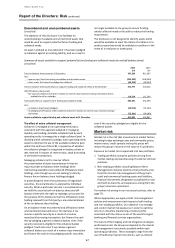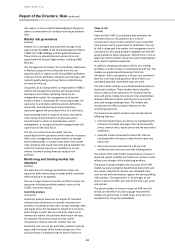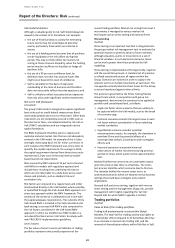HSBC 2014 Annual Report Download - page 61
Download and view the complete annual report
Please find page 61 of the 2014 HSBC annual report below. You can navigate through the pages in the report by either clicking on the pages listed below, or by using the keyword search tool below to find specific information within the annual report.
HSBC BANK PLC
Report of the Directors: Risk (continued)
59
Liquidity and funding risk
Liquidity risk is the risk that the group does not have
sufficient financial resources to meet its obligations as
they fall due, or will have access to such resources only
at an excessive cost. This risk principally arises from
mismatches in the timing of cash flows. Funding risk (a
form of liquidity risk) arises when the liquidity needed to
fund illiquid asset positions cannot be obtained on the
expected terms and when required.
The objective of the group’s liquidity and funding
management framework is to ensure that all foreseeable
funding commitments can be met when due, and that
access to the wholesale markets is co-ordinated and
cost-effective. To this end, the group maintains a
diversified funding base comprising core retail and
corporate customer deposits and institutional balances.
This is augmented with wholesale funding and portfolios
of highly liquid assets diversified by currency and
maturity that are held to enable the group to respond
quickly and smoothly to unforeseen liquidity
requirements.
The group requires its operating entities to maintain
strong liquidity positions and to manage the liquidity
profiles of their assets, liabilities and commitments with
the objective of ensuring that their cash flows are
balanced appropriately and that all their anticipated
obligations can be met when due. The group adapts its
liquidity and funding risk management framework in
response to changes in the mix of business that it
undertakes, and to changes in the nature of the markets
in which it operates. The group also seeks to
continuously evolve and strengthen its liquidity and
funding risk management framework.
The group employs a number of measures to monitor
liquidity risk. The group also manages its intra-day
liquidity positions so that it is able to meet payment and
settlement obligations on a timely basis. Payment flows
in real time gross settlement systems, expected peak
payment flows and large time-critical payments are
monitored during the day and the intra-day collateral
position is managed so that there is liquidity available to
meet payments.
The management of liquidity and funding is primarily
undertaken locally in the group’s operating entities in
compliance with policies and limits set by the Risk
Management Meeting (‘RMM’). These limits vary
according to the depth and liquidity of the market in
which the entities operate. It is the group’s general
policy that each banking entity should manage its
liquidity and funding risk on a standalone basis.
Exceptions are permitted for certain short-term treasury
requirements and start-up operations or for branches
which do not have access to local deposit markets. These
entities are funded from the group’s largest banking
operations and within clearly defined internal and
regulatory guidelines and limits. The limits place formal
restrictions on the transfer of resources between group
entities and reflect the range of currencies, markets and
time zones within which the group operates.
The group’s liquidity and funding management process
includes:
• projecting cash flows by major currency under various
stress scenarios and considering the level of liquid
assets necessary in relation to these;
• monitoring balance sheet liquidity and advances to
core funding ratios at both a consolidated and major
currency level against internal and regulatory
requirements;
• maintaining a diverse range of funding sources with
back-up facilities;
• managing the concentration and profile of debt
maturities;
• managing contingent liquidity commitment exposures
within pre-determined caps;
• maintaining debt financing plans;
• monitoring depositor concentration in order to avoid
undue reliance on large individual depositors and
ensure a satisfactory overall funding mix; and
• maintaining liquidity and funding contingency plans.
These plans identify early indicators of stress
conditions and describe actions to be taken in the
event of difficulties arising from systemic or other
crises, while minimising adverse long-term
implications for the business.
Primary sources of funding
(Audited)
Customer deposits in the form of current accounts and
savings deposits payable on demand or at short notice
form a significant part of our funding, and we place
considerable importance on maintaining their stability.
For deposits, stability depends upon maintaining
depositor confidence in our capital strength and
liquidity, and on competitive and transparent pricing.
We also access wholesale funding markets by issuing
senior secured and unsecured debt securities (publically
and privately) and borrowing from the secured repo
markets against high quality collateral, in order to obtain
funding for non-banking subsidiaries that do not accept
deposits, to align asset and liability maturities and
currencies and to maintain a presence in local wholesale
markets.
Liquidity and funding in 2014
(Unaudited)
The group maintained its liquidity position in 2014 and
continued to enjoy strong inflows of customer deposits
and maintained good access to wholesale markets. HSBC
UK recorded a decrease in its advances to core funding
(‘ACF’) ratio to 97 per cent at 31 December 2014 (2013:
100 per cent) mainly because core deposits increased
more than advances, and due to the reduction in legacy
assets.
Liquidity regulation
(Unaudited)
The European adoption of the Basel Committee
framework (legislative texts known as the Capital
Requirements Regulation and Directive – CRR/CRD IV)
was published in June 2013, and required the reporting
of the liquidity coverage ratio (‘LCR’) and the net stable
funding ratio (‘NSFR’) to European regulators from
January 2014, which was subsequently delayed until 30


